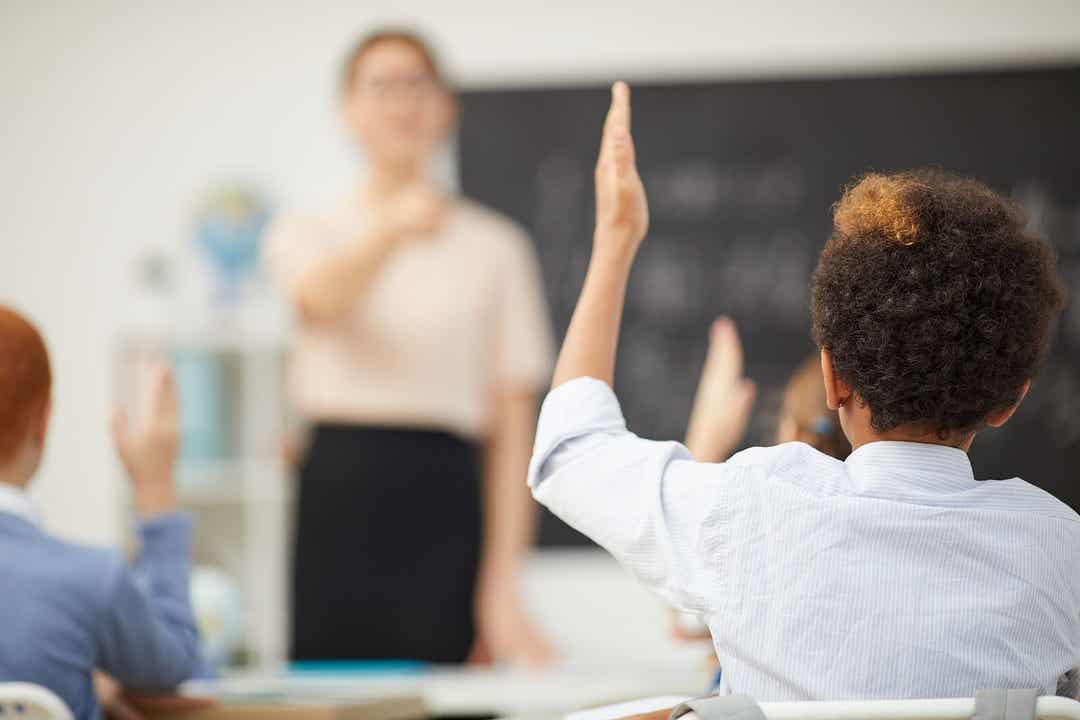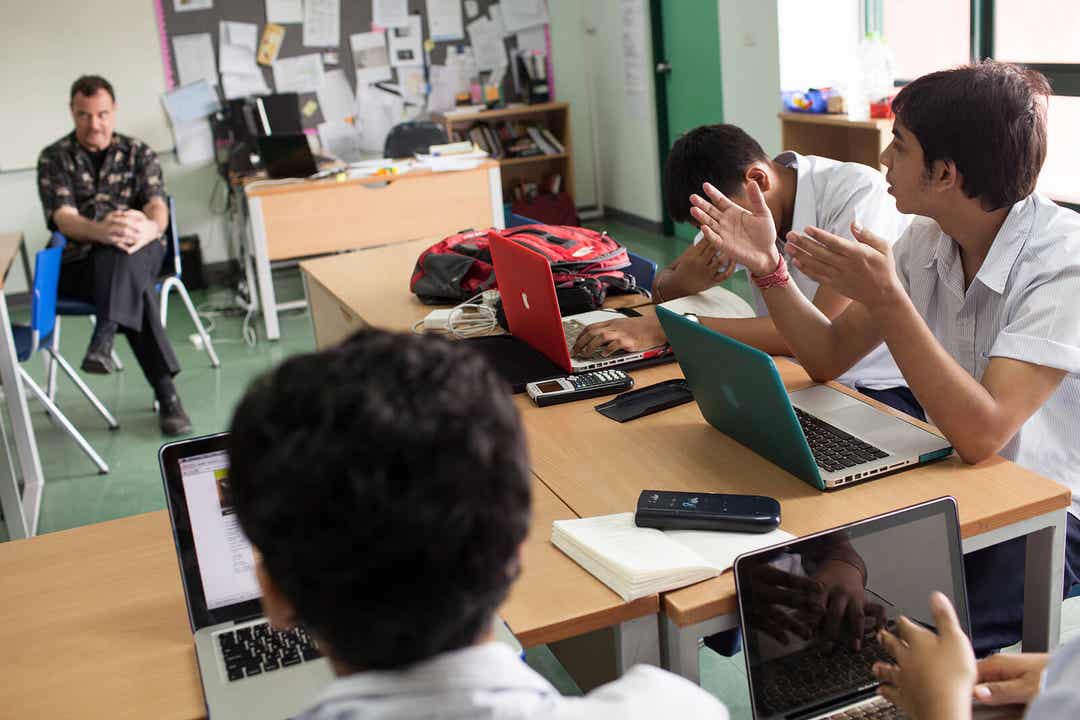Debate Techniques in The Classroom

It’s important to teach students to speak in public, as it’s one of the main skills required in social and working life. A good strategy for this purpose is to use debate techniques. Here are some of them.
Debate techniques
Debate techniques develop communication and oral expression in students. They also encourage active participation and values such as respect. We could say that debates are a good way to promote reflection and argumentation, as they encourage students to take a position and defend it.
What are their characteristics?
- They require preparation and organization.
- The subject matter of the debates must be feasible for questioning and analysis.
- They allow the integration of oral communication skills and argumentative capacity.
- They favor respect, tolerance, and cooperation.
- A debate involves the confrontation of opposing positions regarding a topic or problem.

Some debate techniques
Small group discussion (ages 14 and up)
This is a face-to-face exchange of ideas on a topic of interest among a small group of students. It’s an informal and flexible discussion, but with some ground rules:
- The topic of discussion must be of interest to the whole group.
- The exchange of ideas must follow a certain logical order, although the discussion must be spontaneous.
- The group or teacher must select a coordinator and a secretary.
- Active and free participation should be encouraged.
- It’s a good idea to stand or sit in a circle so that everyone can see each other and be able to communicate face to face.
The process:
- The educator chooses the topic that the group will discuss. They present it to the children in advance so that they can think about it, gather information, and therefore, make the discussion richer and more grounded.
- The group chooses a coordinator and a secretary. The coordinator leads the day’s session and must stimulate the group’s participation.
- The secretary’s responsible for jotting down the ideas that arise during the discussion, recording the conclusions, and keeping track of time.
- The students choose the rules as a group, as well as the time they’ll devote to the discussion and the members’ presentations (about two or three minutes).
- The members of the group expose their ideas and points of view freely and try not to deviate from the topic.
- When the coordinator sees fit, they’ll pause to recapitulate what’s taken place or ask for clarification on any point.
- The students must reach their conclusions by consensus.
- At the end of the discussion, the coordinator will summarize what the group has discussed and formulate conclusions. The secretary will record these conclusions.
- Finally, the educator points out the general conclusions and summarizes the topic that the group has discussed.
Snowball or pyramid (from 10 years of age)
The educator presents a topic and the children will have to work on it. Work takes place in 3 phases:
- First phase. The students form pairs to talk about and discuss the topic that the teacher has presented.
- Second phase. The pairs divide into subgroups of four. Between the four of them, they discuss the topic.
- Third phase. The groups of four come together to form groups of 8. Among the 8 students, they’ll reach a conclusion that they must present to the entire class. It’s the secretary of each group who presents the conclusions they’ve reached to everyone else.
It’s important for the teacher to indicate the times that students will have for each phase. They should also ensure a climate of communication and participation among the students. This technique favors autonomous thinking, verbal expression, and communication.
Whispering or simultaneous dialogues (from 10 years of age)
Whispering’s a technique that consists of dividing a group into pairs. In this way, the whole group dialogues simultaneously on the same subject. In a few minutes, the educator can obtain a shared opinion on a question they’ve posed to the group.
Each pair quietly (so as not to disturb the others) discusses a topic, problem, or issue that the teacher has proposed. One of the members will act as secretary, who will read the final opinion or conclusion when all the ideas are put together.
Through this technique, the educator can quickly know the level of understanding and doubts about a topic of study or an explanation. They can also use it to make decisions about which topics are of most interest to the group, rules, procedures to follow, etc.
Panel discussions (from 12 years of age)
This technique involves a debate between two subgroups within the class group. The teacher or the students can suggest the topic the groups will discuss, according to their interests.
In this technique, the educator plays a very important role. They act as a guide and moderator and should encourage participation by asking questions, highlighting the arguments each group presents, and pointing out the points of greatest interest.
The educator presents the topic of discussion and establishes the rules of participation. Each group must hold different positions on the proposed topic. In each of the groups, there is a spokesperson who’s a “specialist in the topic”. The other members will assume the role of spectators who, at times, may be called upon to participate.

The order of the debate:
- Presentation of the arguments of subgroup A, without the right to respond
- Presentation of the arguments of subgroup B, without the right to respond.
- Once the presentations have been made, subgroup A will ask questions to subgroup B. Subgroup B will then ask questions to subgroup A.
- Questions from the group to subgroup A, with the right to reply.
- Questions from the group to subgroup B, with the right to reply.
- Free discussion among the other members of the subgroups. They can ask questions, request clarifications, refute arguments, etc.
All interventions may be accompanied and supported by materials considered appropriate, such as slides, films, testimonies in recorded interviews, videos, written documents, etc.
At the end of the activity, the educator will make a summary or conclusion on the different arguments expressed and will point out the points of agreement and disagreement. Likewise, they’ll end with a presentation of the most important ideas of the topic that’s been discussed.
In short, debate techniques always require organization and preparation. In addition, debates must be motivating. The educator should pose questions and reflections that awaken and challenge the minds of the students.
At the same time, the educator should make the students question the information and create doubts about it. In this way, children will be able to generate critical thinking.
It’s important to teach students to speak in public, as it’s one of the main skills required in social and working life. A good strategy for this purpose is to use debate techniques. Here are some of them.
Debate techniques
Debate techniques develop communication and oral expression in students. They also encourage active participation and values such as respect. We could say that debates are a good way to promote reflection and argumentation, as they encourage students to take a position and defend it.
What are their characteristics?
- They require preparation and organization.
- The subject matter of the debates must be feasible for questioning and analysis.
- They allow the integration of oral communication skills and argumentative capacity.
- They favor respect, tolerance, and cooperation.
- A debate involves the confrontation of opposing positions regarding a topic or problem.

Some debate techniques
Small group discussion (ages 14 and up)
This is a face-to-face exchange of ideas on a topic of interest among a small group of students. It’s an informal and flexible discussion, but with some ground rules:
- The topic of discussion must be of interest to the whole group.
- The exchange of ideas must follow a certain logical order, although the discussion must be spontaneous.
- The group or teacher must select a coordinator and a secretary.
- Active and free participation should be encouraged.
- It’s a good idea to stand or sit in a circle so that everyone can see each other and be able to communicate face to face.
The process:
- The educator chooses the topic that the group will discuss. They present it to the children in advance so that they can think about it, gather information, and therefore, make the discussion richer and more grounded.
- The group chooses a coordinator and a secretary. The coordinator leads the day’s session and must stimulate the group’s participation.
- The secretary’s responsible for jotting down the ideas that arise during the discussion, recording the conclusions, and keeping track of time.
- The students choose the rules as a group, as well as the time they’ll devote to the discussion and the members’ presentations (about two or three minutes).
- The members of the group expose their ideas and points of view freely and try not to deviate from the topic.
- When the coordinator sees fit, they’ll pause to recapitulate what’s taken place or ask for clarification on any point.
- The students must reach their conclusions by consensus.
- At the end of the discussion, the coordinator will summarize what the group has discussed and formulate conclusions. The secretary will record these conclusions.
- Finally, the educator points out the general conclusions and summarizes the topic that the group has discussed.
Snowball or pyramid (from 10 years of age)
The educator presents a topic and the children will have to work on it. Work takes place in 3 phases:
- First phase. The students form pairs to talk about and discuss the topic that the teacher has presented.
- Second phase. The pairs divide into subgroups of four. Between the four of them, they discuss the topic.
- Third phase. The groups of four come together to form groups of 8. Among the 8 students, they’ll reach a conclusion that they must present to the entire class. It’s the secretary of each group who presents the conclusions they’ve reached to everyone else.
It’s important for the teacher to indicate the times that students will have for each phase. They should also ensure a climate of communication and participation among the students. This technique favors autonomous thinking, verbal expression, and communication.
Whispering or simultaneous dialogues (from 10 years of age)
Whispering’s a technique that consists of dividing a group into pairs. In this way, the whole group dialogues simultaneously on the same subject. In a few minutes, the educator can obtain a shared opinion on a question they’ve posed to the group.
Each pair quietly (so as not to disturb the others) discusses a topic, problem, or issue that the teacher has proposed. One of the members will act as secretary, who will read the final opinion or conclusion when all the ideas are put together.
Through this technique, the educator can quickly know the level of understanding and doubts about a topic of study or an explanation. They can also use it to make decisions about which topics are of most interest to the group, rules, procedures to follow, etc.
Panel discussions (from 12 years of age)
This technique involves a debate between two subgroups within the class group. The teacher or the students can suggest the topic the groups will discuss, according to their interests.
In this technique, the educator plays a very important role. They act as a guide and moderator and should encourage participation by asking questions, highlighting the arguments each group presents, and pointing out the points of greatest interest.
The educator presents the topic of discussion and establishes the rules of participation. Each group must hold different positions on the proposed topic. In each of the groups, there is a spokesperson who’s a “specialist in the topic”. The other members will assume the role of spectators who, at times, may be called upon to participate.

The order of the debate:
- Presentation of the arguments of subgroup A, without the right to respond
- Presentation of the arguments of subgroup B, without the right to respond.
- Once the presentations have been made, subgroup A will ask questions to subgroup B. Subgroup B will then ask questions to subgroup A.
- Questions from the group to subgroup A, with the right to reply.
- Questions from the group to subgroup B, with the right to reply.
- Free discussion among the other members of the subgroups. They can ask questions, request clarifications, refute arguments, etc.
All interventions may be accompanied and supported by materials considered appropriate, such as slides, films, testimonies in recorded interviews, videos, written documents, etc.
At the end of the activity, the educator will make a summary or conclusion on the different arguments expressed and will point out the points of agreement and disagreement. Likewise, they’ll end with a presentation of the most important ideas of the topic that’s been discussed.
In short, debate techniques always require organization and preparation. In addition, debates must be motivating. The educator should pose questions and reflections that awaken and challenge the minds of the students.
At the same time, the educator should make the students question the information and create doubts about it. In this way, children will be able to generate critical thinking.
All cited sources were thoroughly reviewed by our team to ensure their quality, reliability, currency, and validity. The bibliography of this article was considered reliable and of academic or scientific accuracy.
- GÓMEZ, R. G. TÉCNICAS DE DINÁMICAS DE GRUPOS. https://archivos.csif.es/archivos/andalucia/ensenanza/revistas/csicsif/revista/pdf/Numero_2/rafagonzalez_dinamica_de_grupos.pdf
This text is provided for informational purposes only and does not replace consultation with a professional. If in doubt, consult your specialist.








